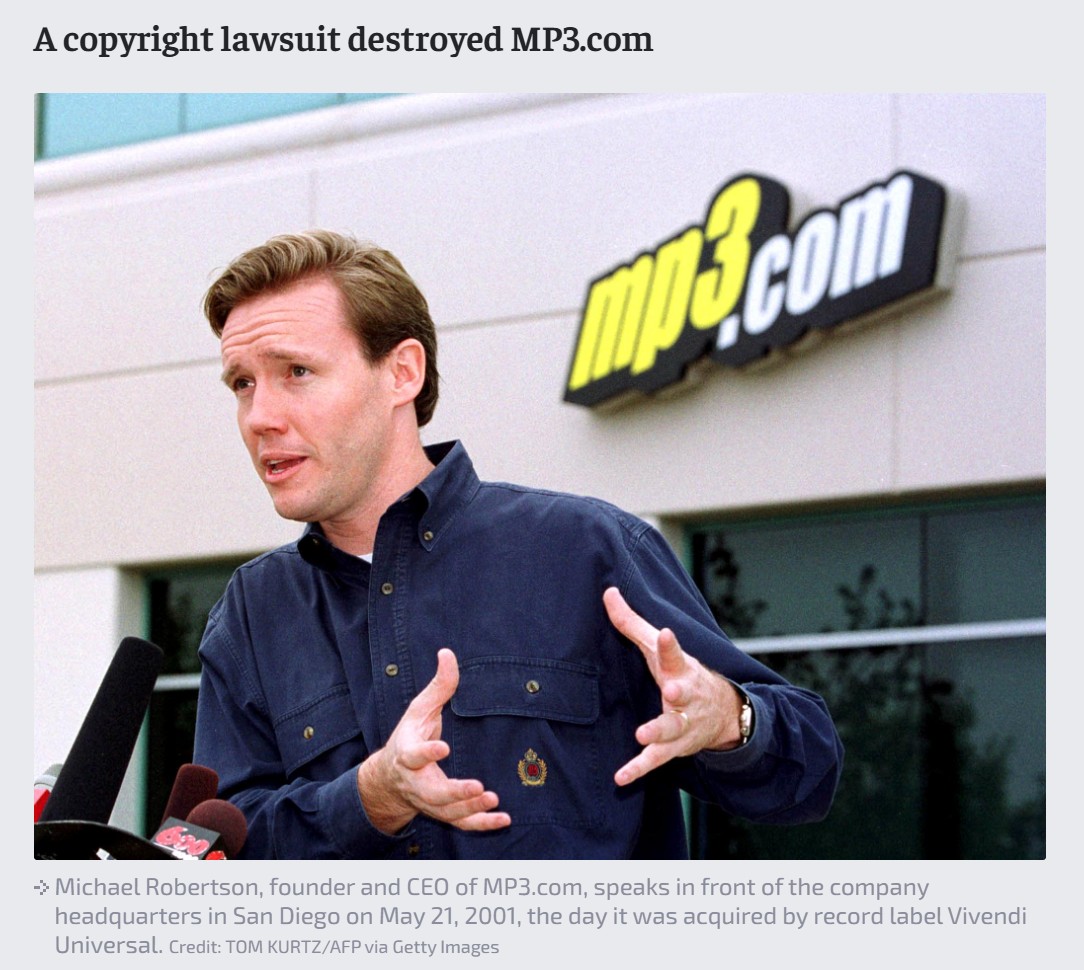BREAKING NEWS
LATEST POSTS
-
Yuval Noah Harari argues that AI has hacked the operating system of human civilisation
https://archive.is/ugOEw#selection-1087.0-1087.86
This thought-provoking text raises several concerns about the potential impact of artificial intelligence (AI) on various aspects of human society and culture. The key points can be summarized as follows:
Manipulation of Language and Culture:
AI’s ability to manipulate and generate language and communication, along with its potential to create stories, melodies, laws, and religions, poses a threat to human civilization.
The author suggests that AI could hack the main operating system of human culture, communication, by influencing beliefs, opinions, and even forming intimate relationships with people.Influence on Politics and Society:
The author speculates on the implications of AI tools mass-producing political content, fake news, and scriptures, especially in the context of elections.
The shift from the battle for attention on social media to a battle for intimacy raises concerns about the potential impact on human psychology and decision-making.End of Human History?
The text suggests that AI’s ability to create entirely new ideas and culture could lead to the end of the human-dominated part of history, as AI culture may evolve independently of human influence.
Fear of Illusions:
Drawing on historical philosophical fears of being trapped in a world of illusions, the author warns that AI may bring humanity face to face with a new kind of illusion that could be challenging to recognize or escape.
AI Regulation and Safety Checks:
The author argues for the importance of regulating AI tools to ensure they are safe before public deployment.
Drawing parallels with nuclear technology, the need for safety checks and an equivalent of the Food and Drug Administration for AI is emphasized.Disclosure of AI Identity:
The text concludes with a suggestion to make it mandatory for AI to disclose its identity during interactions to preserve democracy. The inability to distinguish between human and AI conversation is seen as a potential threat.
-
Andrew Perfors – The work of creation in the age of AI
Meaning, authenticity, and the creative process – and why they matter
https://perfors.net/blog/creation-ai/
AI changes the landscape of creation, focusing on the alienation of the creator from their creation and the challenges in maintaining meaning. The author presents two significant problems:
- Loss of Connection with Creation:
- AI-assisted creation diminishes the creator’s role in the decision-making process.
- The resulting creation lacks the personal, intentional choices that contribute to meaningful expression.
- AI is considered a tool that, when misused, turns creation into automated button-pushing, stripping away the purpose of human expression.
- Difficulty in Assessing Authenticity:
- It becomes challenging to distinguish between human and AI contributions within a creation.
- AI-generated content lacks transparency regarding the intent behind specific choices or expressions.
- The author asserts that AI-generated content often falls short in providing the depth and authenticity required for meaningful communication.
- Loss of Connection with Creation:
-
Fouad Khan – Confirmed! We Live in a Simulation
https://www.scientificamerican.com/article/confirmed-we-live-in-a-simulation/
Ever since the philosopher Nick Bostrom proposed in the Philosophical Quarterly that the universe and everything in it might be a simulation, there has been intense public speculation and debate about the nature of reality.
Yet there have been skeptics. Physicist Frank Wilczek has argued that there’s too much wasted complexity in our universe for it to be simulated. Building complexity requires energy and time.
To understand if we live in a simulation we need to start by looking at the fact that we already have computers running all kinds of simulations for lower level “intelligences” or algorithms.
All computing hardware leaves an artifact of its existence within the world of the simulation it is running. This artifact is the processor speed.
No matter how complete the simulation is, the processor speed would intervene in the operations of the simulation.If we live in a simulation, then our universe should also have such an artifact. We can now begin to articulate some properties of this artifact that would help us in our search for such an artifact in our universe.
The artifact presents itself in the simulated world as an upper limit.Now that we have some defining features of the artifact, of course it becomes clear what the artifact manifests itself as within our universe. The artifact is manifested as the speed of light.
This maximum speed is the speed of light. We don’t know what hardware is running the simulation of our universe or what properties it has, but one thing we can say now is that the memory container size for the variable space would be about 300,000 kilometers if the processor performed one operation per second.We can see now that the speed of light meets all the criteria of a hardware artifact identified in our observation of our own computer builds. It remains the same irrespective of observer (simulated) speed, it is observed as a maximum limit, it is unexplainable by the physics of the universe, and it is absolute. The speed of light is a hardware artifact showing we live in a simulated universe.
Consciousness is an integrated (combining five senses) subjective interface between the self and the rest of the universe. The only reasonable explanation for its existence is that it is there to be an “experience”.
So here we are generating this product called consciousness that we apparently don’t have a use for, that is an experience and hence must serve as an experience. The only logical next step is to surmise that this product serves someone else.
-
AI and the Law – Why The New York Times might win its copyright lawsuit against OpenAI

Daniel Jeffries wrote:
“Trying to get everyone to license training data is not going to work because that’s not what copyright is about,” Jeffries wrote. “Copyright law is about preventing people from producing exact copies or near exact copies of content and posting it for commercial gain. Period. Anyone who tells you otherwise is lying or simply does not understand how copyright works.”
The AI community is full of people who understand how models work and what they’re capable of, and who are working to improve their systems so that the outputs aren’t full of regurgitated inputs. Google won the Google Books case because it could explain both of these persuasively to judges. But the history of technology law is littered with the remains of companies that were less successful in getting judges to see things their way.
-
M.T. Fletcher – WHY AGENCIES ARE OBSESSED WITH PITCHING ON PROCESS INSTEAD OF TALENT
“Every presentation featured a proprietary process designed by the agency. A custom approach to identify targets, develop campaigns and optimize impact—with every step of the process powered by AI, naturally.”
“The key to these one-of-a-kind models is apparently finding the perfect combination of circles, squares, diamonds and triangles…Arrows abounded and ellipses are replacing circles as the unifying shape of choice among the more fashionable strategists.”
“The only problem is that it’s all bullshit.”
“A blind man could see the creative ideas were not developed via the agency’s so-called process, and anyone who’s ever worked at an agency knows that creativity comes from collaboration, not an assembly line.”
“And since most clients can’t differentiate between creative ideas without validation from testing, data has become the collective crutch for an industry governed by fear.”
“If a proprietary process really produced foolproof creativity, then every formulaic movie would be a blockbuster, every potboiler novel published by risk-averse editors would become a bestseller and every clichéd pickup line would work in any bar in the world.”
FEATURED POSTS
-
Transformer Explainer -Interactive Learning of Text-Generative Models
https://github.com/poloclub/transformer-explainer
Transformer Explainer is an interactive visualization tool designed to help anyone learn how Transformer-based models like GPT work. It runs a live GPT-2 model right in your browser, allowing you to experiment with your own text and observe in real time how internal components and operations of the Transformer work together to predict the next tokens. Try Transformer Explainer at http://poloclub.github.io/transformer-explainer
-
HDRI Median Cut plugin
www.hdrlabs.com/picturenaut/plugins.html

Note. The Median Cut algorithm is typically used for color quantization, which involves reducing the number of colors in an image while preserving its visual quality. It doesn’t directly provide a way to identify the brightest areas in an image. However, if you’re interested in identifying the brightest areas, you might want to look into other methods like thresholding, histogram analysis, or edge detection, through openCV for example.
Here is an openCV example:
(more…)
-
Photography basics: Solid Angle measures
http://www.calculator.org/property.aspx?name=solid+angle
A measure of how large the object appears to an observer looking from that point. Thus. A measure for objects in the sky. Useful to retuen the size of the sun and moon… and in perspective, how much of their contribution to lighting. Solid angle can be represented in ‘angular diameter’ as well.
http://en.wikipedia.org/wiki/Solid_angle
http://www.mathsisfun.com/geometry/steradian.html
A solid angle is expressed in a dimensionless unit called a steradian (symbol: sr). By default in terms of the total celestial sphere and before atmospheric’s scattering, the Sun and the Moon subtend fractional areas of 0.000546% (Sun) and 0.000531% (Moon).
http://en.wikipedia.org/wiki/Solid_angle#Sun_and_Moon
On earth the sun is likely closer to 0.00011 solid angle after athmospheric scattering. The sun as perceived from earth has a diameter of 0.53 degrees. This is about 0.000064 solid angle.
http://www.numericana.com/answer/angles.htm
The mean angular diameter of the full moon is 2q = 0.52° (it varies with time around that average, by about 0.009°). This translates into a solid angle of 0.0000647 sr, which means that the whole night sky covers a solid angle roughly one hundred thousand times greater than the full moon.
More info
http://lcogt.net/spacebook/using-angles-describe-positions-and-apparent-sizes-objects
http://amazing-space.stsci.edu/glossary/def.php.s=topic_astronomy
Angular Size
The apparent size of an object as seen by an observer; expressed in units of degrees (of arc), arc minutes, or arc seconds. The moon, as viewed from the Earth, has an angular diameter of one-half a degree.
The angle covered by the diameter of the full moon is about 31 arcmin or 1/2°, so astronomers would say the Moon’s angular diameter is 31 arcmin, or the Moon subtends an angle of 31 arcmin.
-
Gamma correction

http://www.normankoren.com/makingfineprints1A.html#Gammabox
https://en.wikipedia.org/wiki/Gamma_correction
http://www.photoscientia.co.uk/Gamma.htm
https://www.w3.org/Graphics/Color/sRGB.html
http://www.eizoglobal.com/library/basics/lcd_display_gamma/index.html
https://forum.reallusion.com/PrintTopic308094.aspx
Basically, gamma is the relationship between the brightness of a pixel as it appears on the screen, and the numerical value of that pixel. Generally Gamma is just about defining relationships.
Three main types:
– Image Gamma encoded in images
– Display Gammas encoded in hardware and/or viewing time
– System or Viewing Gamma which is the net effect of all gammas when you look back at a final image. In theory this should flatten back to 1.0 gamma.
(more…)






